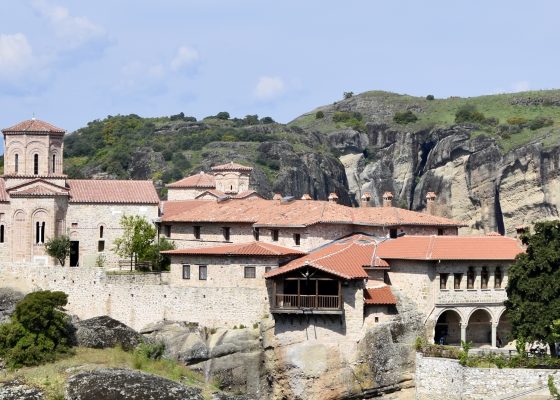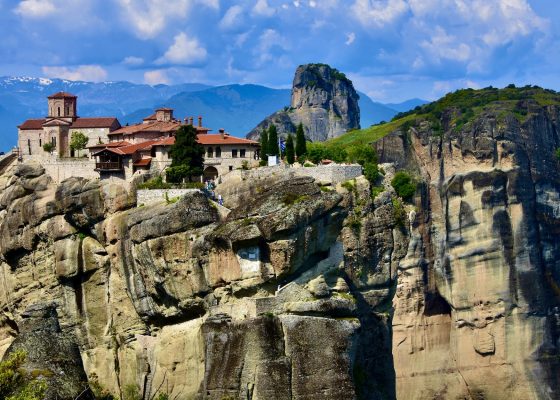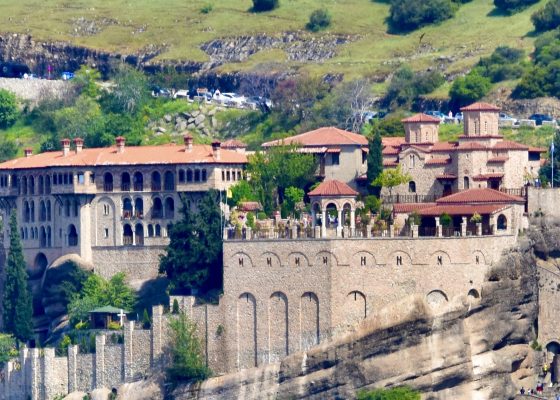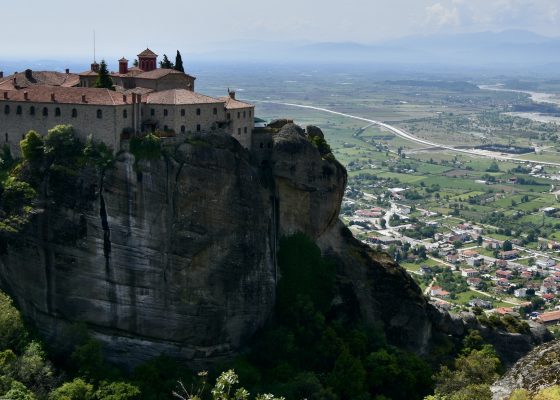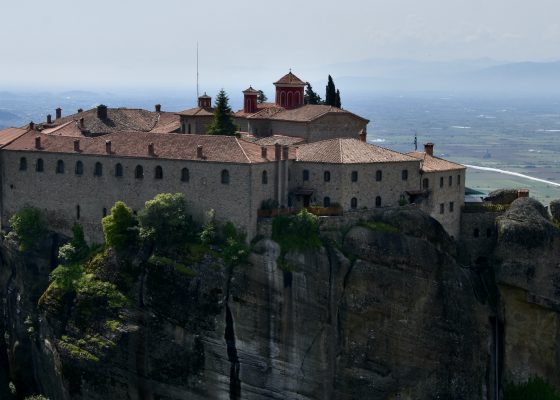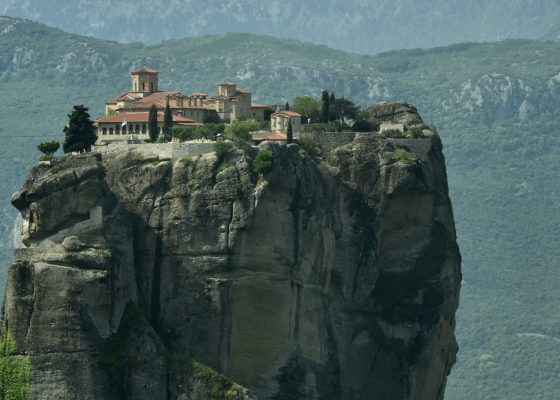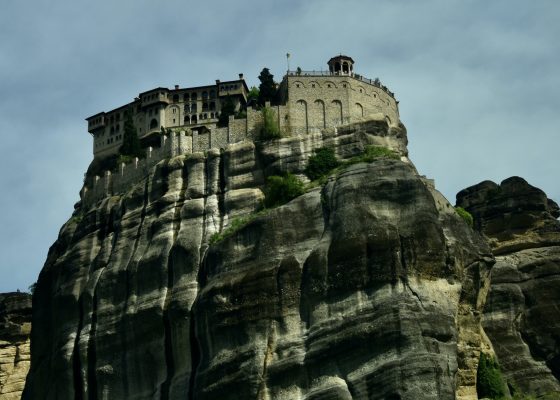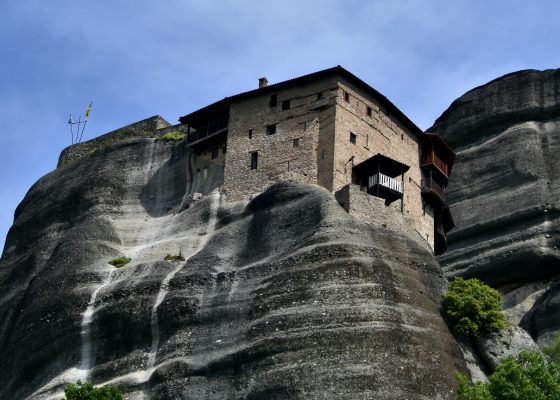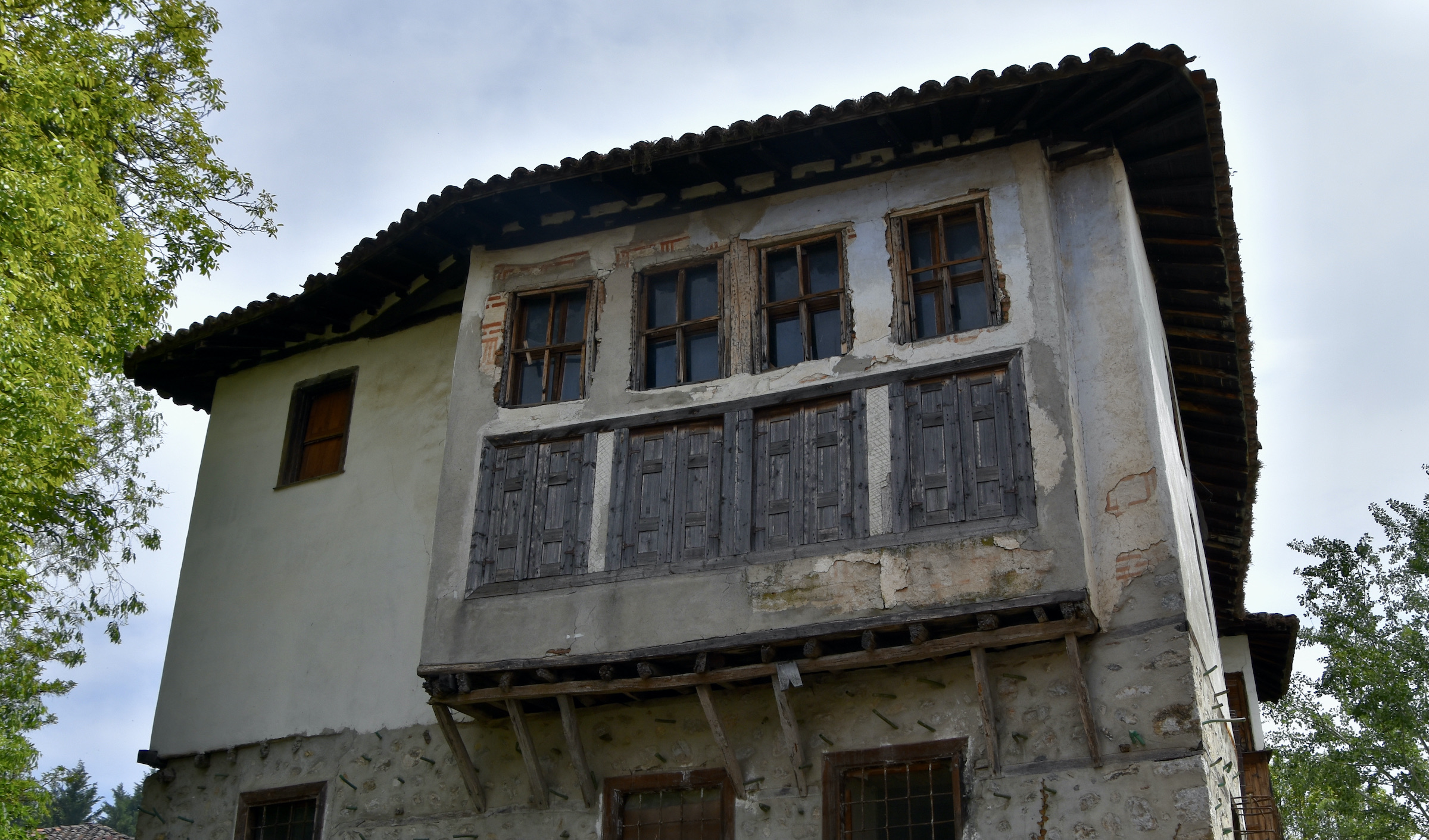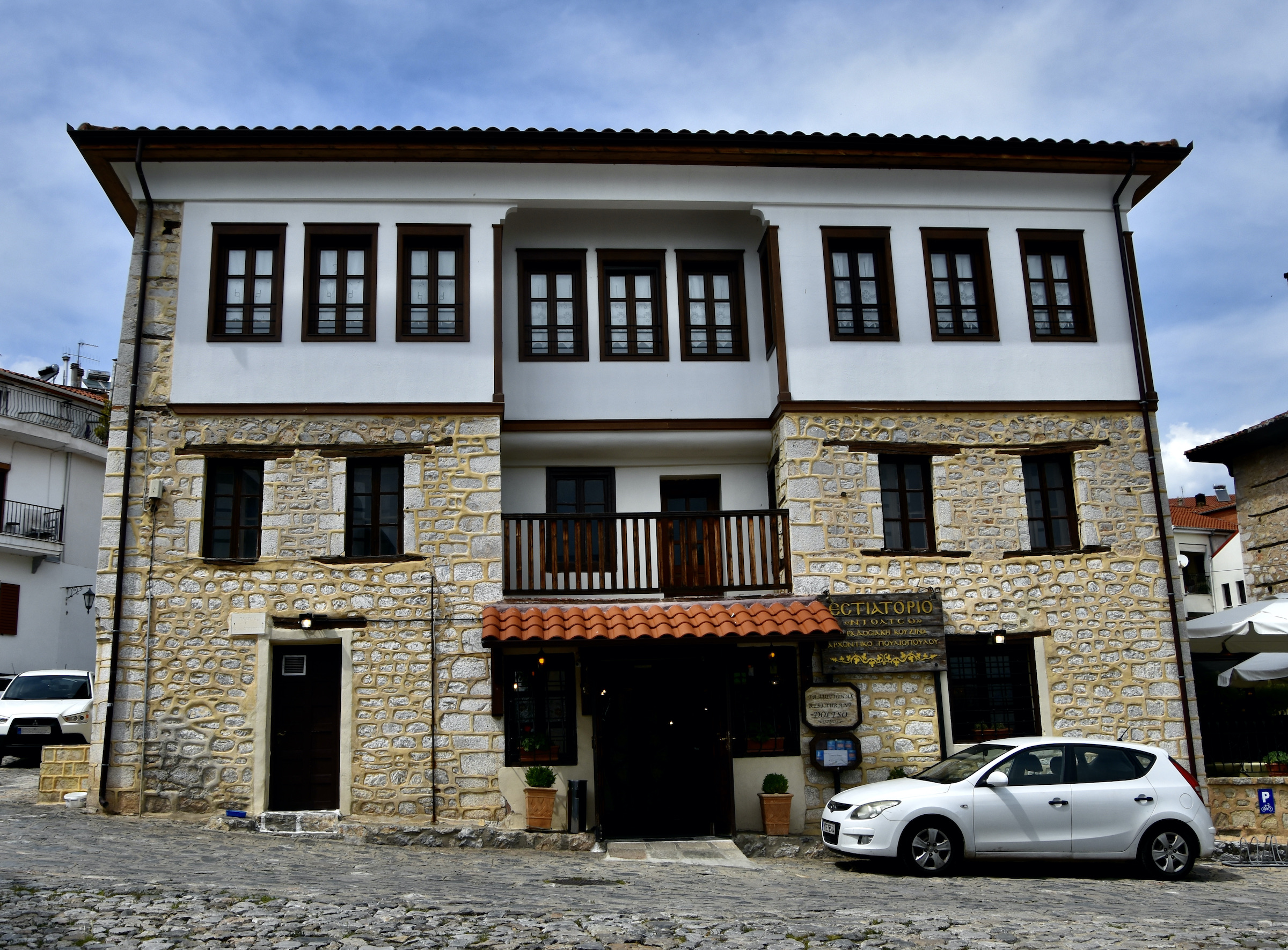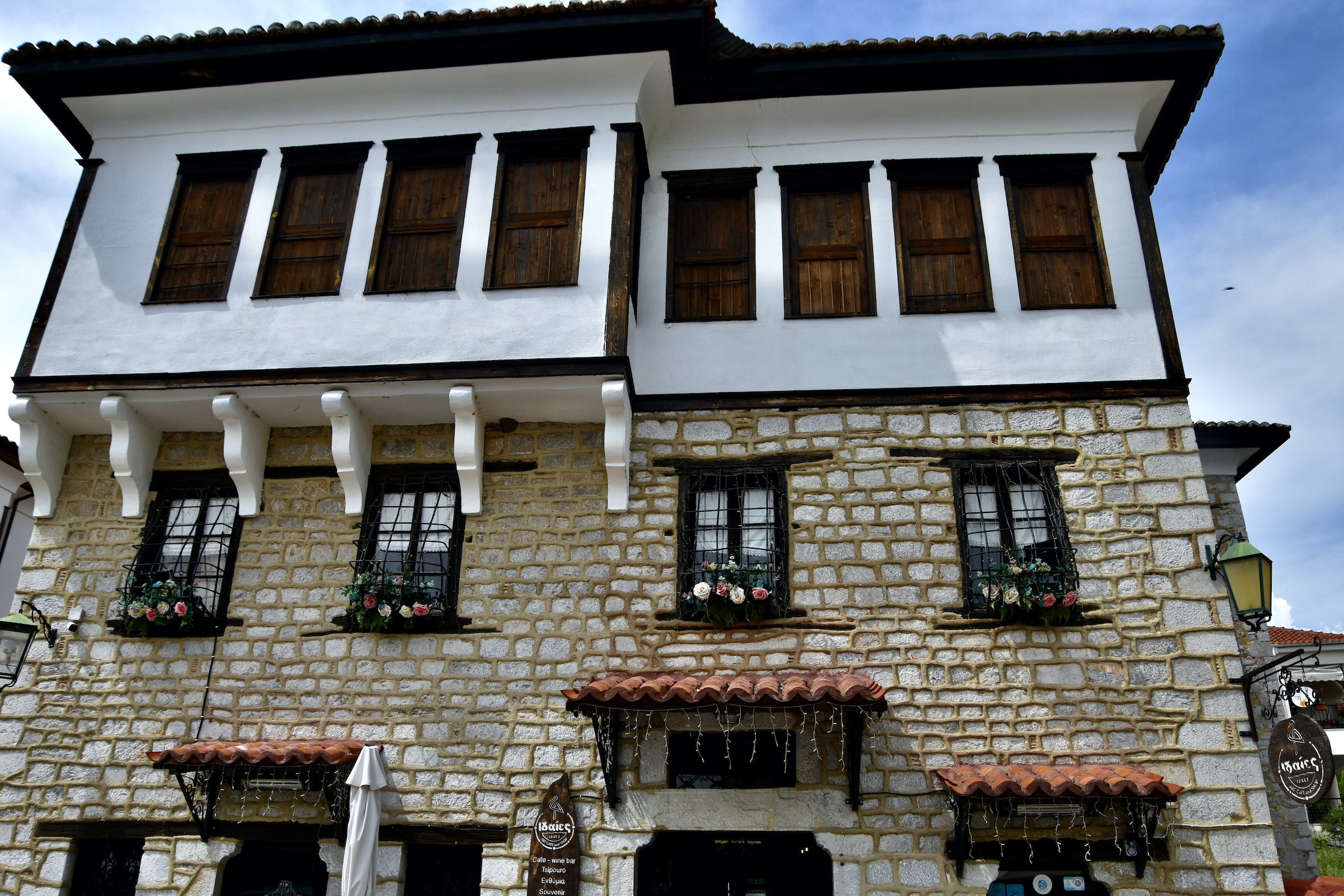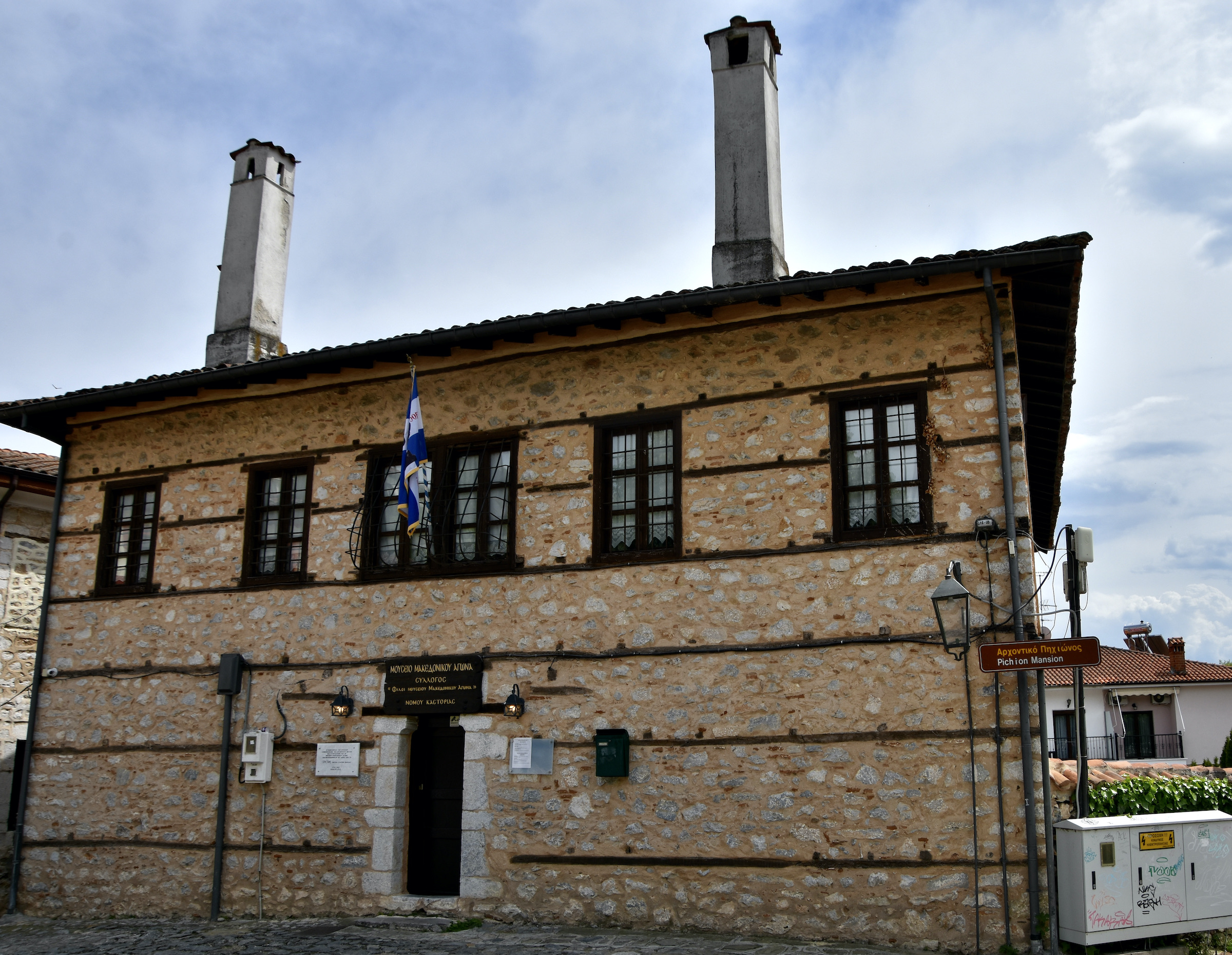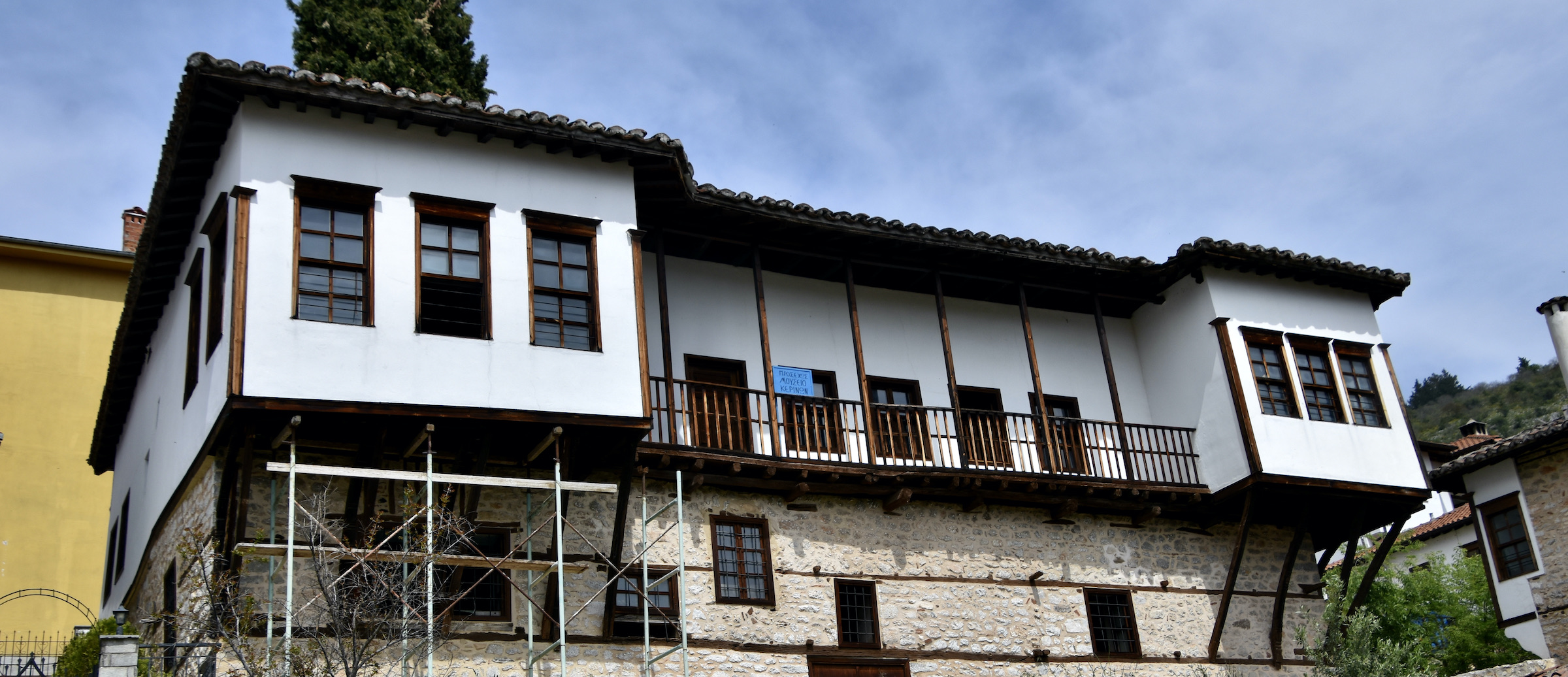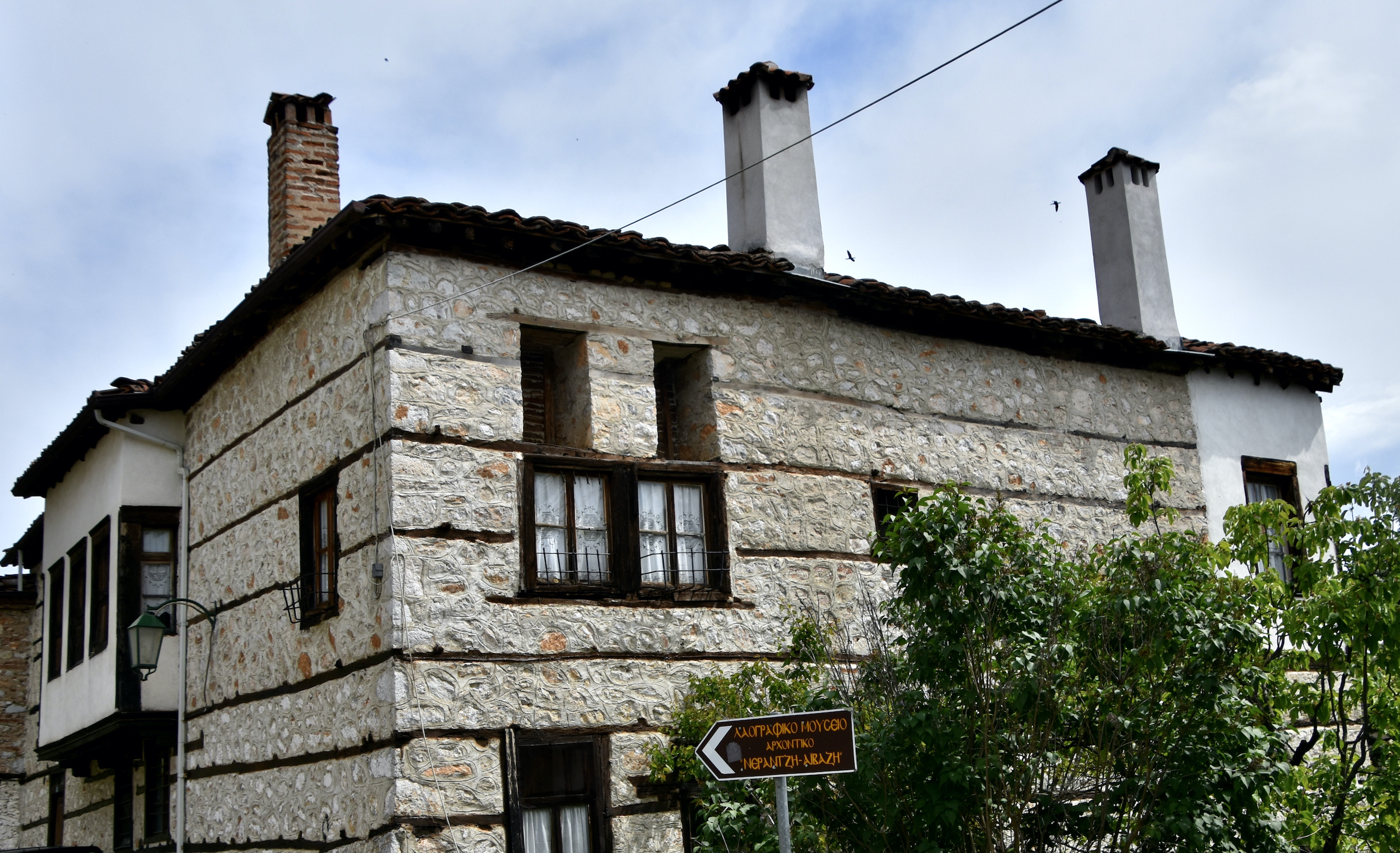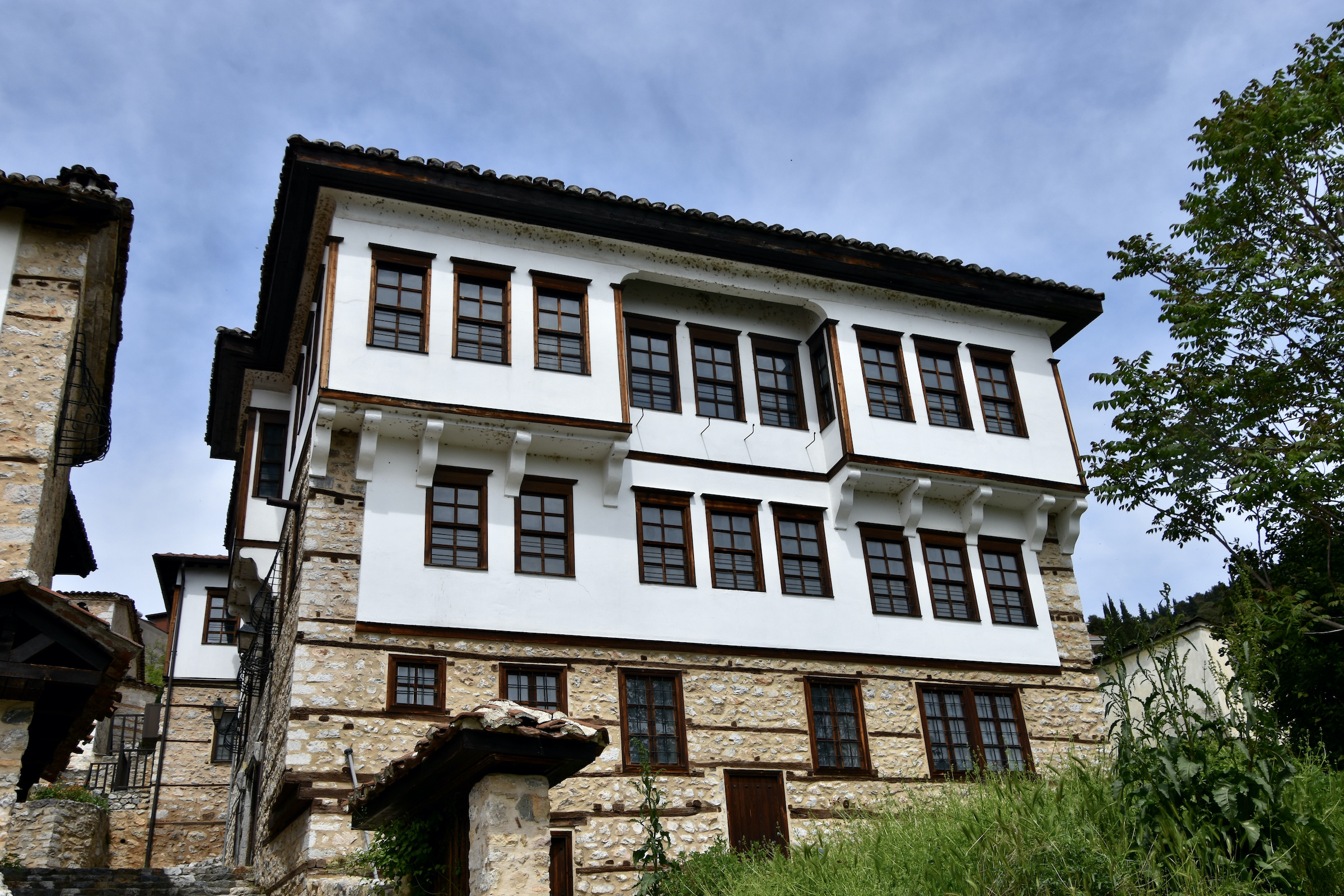Meteora and Kastoria – Essentials in Northern Greece
The Adventures Abroad Via Egnatia tour is making its way westward in northern Greece as we leave behind Mount Olympus and the world of Alexander the Great and the ancient Macedonians. Our destination today is the fabled fur trading city of Kastoria, but on the way we will re-enter the world of the Byzantines once more as we stop to view the amazing monasteries built atop rock formations at Meteora. I was first here over twenty years ago on my very first Adventures Abroad trip and I have never forgotten the sense of wonder that these impossible looking monasteries inspired in me.
History of Meteora

The first thing to learn about Meteora is the unique geology that made it possible for Byzantine monks to build their monasteries atop seemingly impossible to climb cliffs. We are all familiar with the buttes and mesas of the American west, with Monument Valley being the most notable example. Those were caused by the seabed being uplifted and erosion then doing its work over millions of years to leave only the hardest of the rocks standing. Another type of geologic feature that creates monoliths that rise abruptly from the surrounding landscape is the volcanic plug whereby the interior of a volcano contains hard rock and the rest is much softer lava that erodes away over time. The most famous example of this type is Devil’s Tower in Wyoming. The Meteora landscape was created by a different process than both of these. What you have in this relatively tiny geologic area are the remnants of what was once the delta of a river flowing into a freshwater lake that was uplifted. Instead of the pure sandstone of the rocks of Monument Valley Meteora has a unique combination of sandstone and conglomerate that when eroded away has left structures like that above that are surrounded on all sides by high cliffs.
Habitation dates back over 50,000 years in Meteora starting with the Neanderthals who were supplanted by our species about 20,000 years ago. Despite this long period of continuous dwelling, Meteora seems to have been so far off the beaten path that it does not appear in Greek myths or literature or even in Roman times. The first historical records date to the 9th century when Christian hermits began using the rock pinnacles and many caves in the area as places of refuge and seclusion. The building of monasteries atop the rocks didn’t occur until the 14th century when the monks were threatened by the Ottomans who were moving into northern Greece. The most famous monastery The Great Meteoron was founded by monks from Mount Athos which we visited earlier on this tour. There they had already learned the techniques of building impregnable monasteries on top of seemingly unscalable cliffs.
Access to the monasteries right up until the 1920’s was only by way of rope ladders or woven baskets that were pulled up from above. Considering that the ascents could be as great as 373 metres (1244 feet) in the case of Varlaam Monastery which is almost exactly as high as the Empire State building, it must have been terrifying and exhausting. It also brings up the question, who was the first to climb up there without ladders and how?
All told there were 24 monasteries in Meteora at its peak from the 13th to the 16th centurys. Today there are only six still active and unlike Mount Athos new members are not joining and it appears that eventually there will be none still operating as monasteries. However, even if that happens it would behoove the Greek government to maintain at least a few of them because they are incredible tourist attractions. Since the 1920’s stairways have been cut that provide access to some of the monasteries and a few have miniature cable cars. Wouldn’t you fancy stepping into that knowing that if those tiny cables snapped it’s long, long way down?

In 1988 Meteora was inscribed as a UNESCO World Heritage Site with this description:
In a region of almost inaccessible sandstone peaks, monks settled on these ‘columns of the sky’ from the 11th century onwards. Twenty-four of these monasteries were built, despite incredible difficulties, at the time of the great revival of the eremetic ideal in the 15th century. Their 16th-century frescoes mark a key stage in the development of post-Byzantine painting.
The Meteora monasteries are all located near the Greek town of Kalabaka and the village of Kastraki both of which have become bases for tourists who want to hike to some of the accessible monasteries or visit one of the many caves in the area where the first hermits hung out. There is a circular road that takes you to a number of viewing points as well as the starting point for a number of hikes. We won’t be hiking, but we will be viewing.

Rather than give a detailed explanation of each monastery as I did for Mount Athos, for Meteora I’m going to provide a gallery of what you will see as you take the circular road around the monasteries in the order that we saw them. Double click on an image to open and double click again to enlarge.
- First Monastery
- Second Monastery
- Third Monastery
- Fourth Monastery & Valley Below
- Fourth Monastery
- Fifth Monastery
- Sixth Monastery
- Seventh Monastery
As you can see these are pretty amazing structures well deserving of their universal fame.
On the way down to Kalamaka we got a glimpse of the Meteora monolith that even these ingenious and brave monks could not climb.
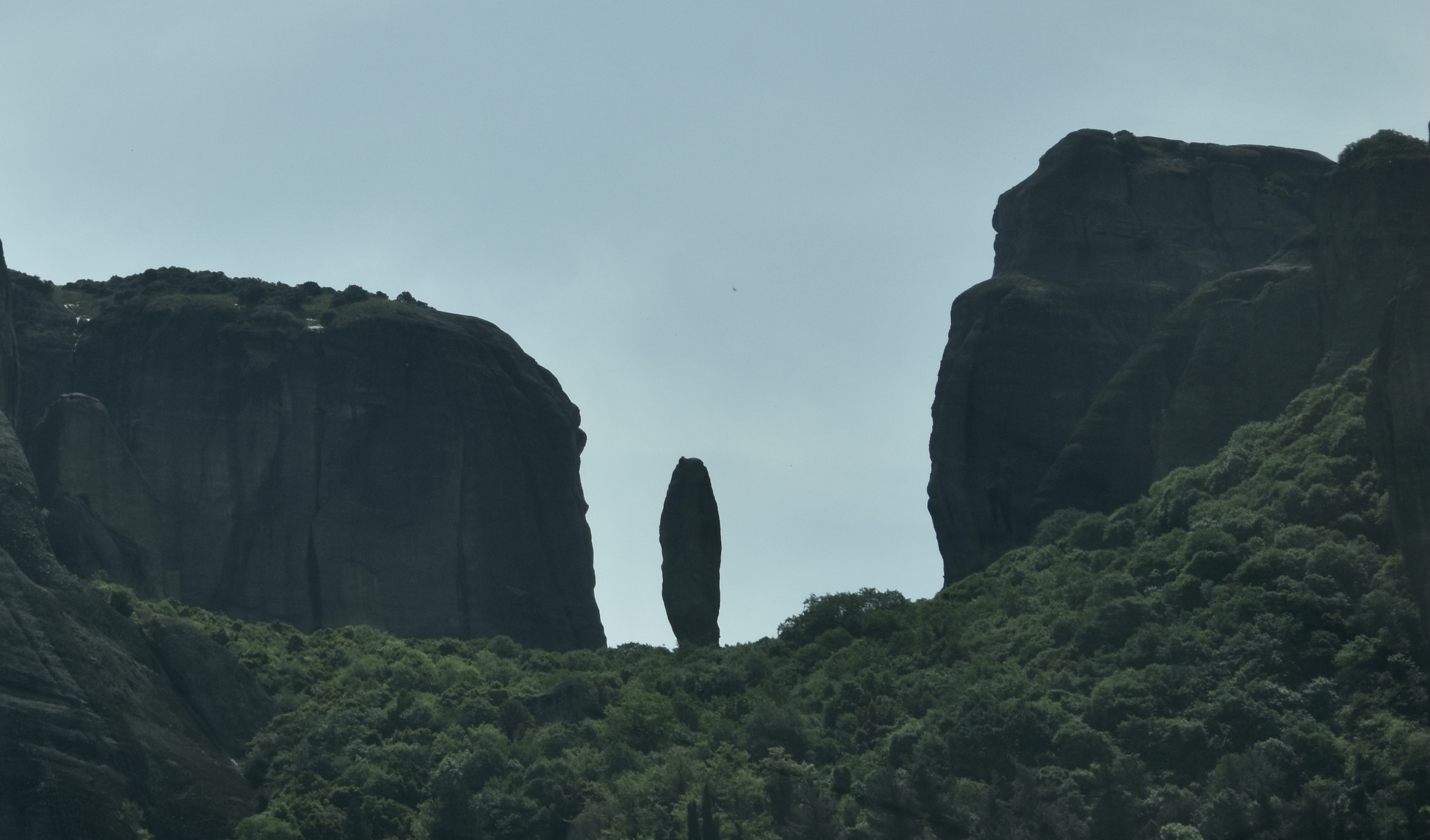
Our last stop before Kalamaka was to view St. George Madillas or the Cave of Flags which is actually a niche in one of the monoliths that seems at first sight impossible to get to, but every year since the 17th century people have been coming here to plant flags as a sign of resistance to the Ottoman occupation.
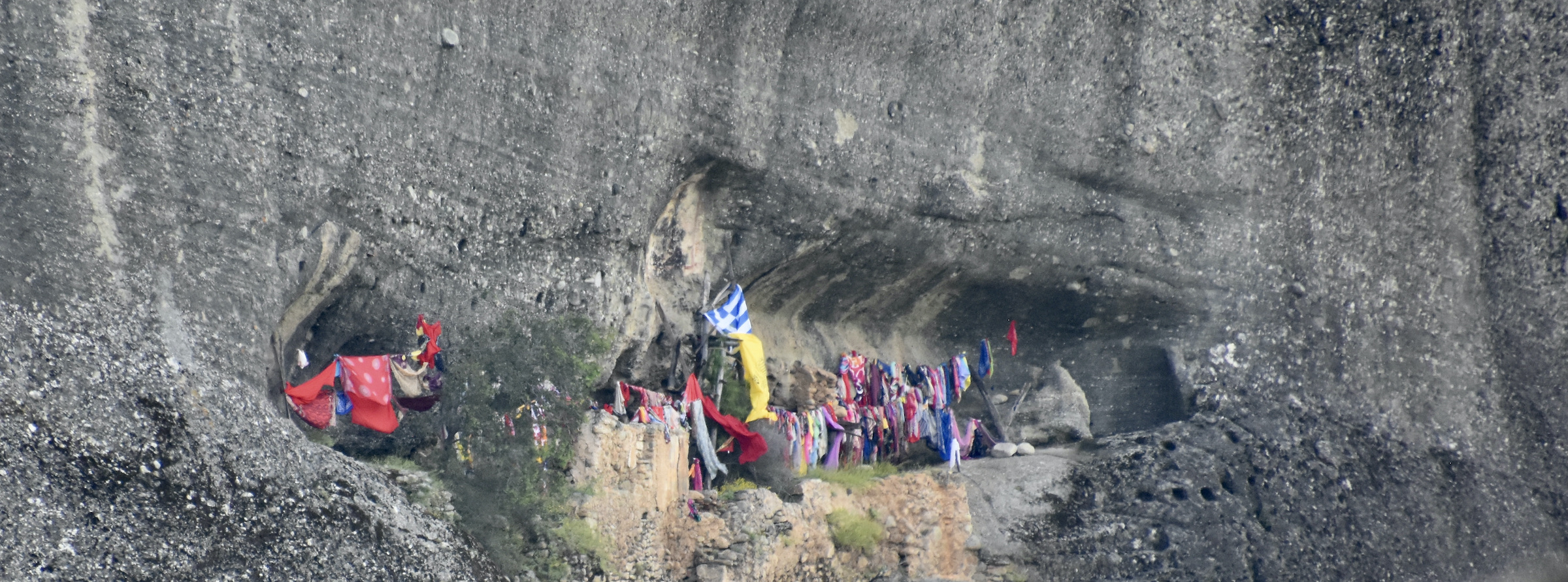
While making the circle of the Meteora monasteries there will a number of places where you can get good photos to prove you were actually there, like this one.
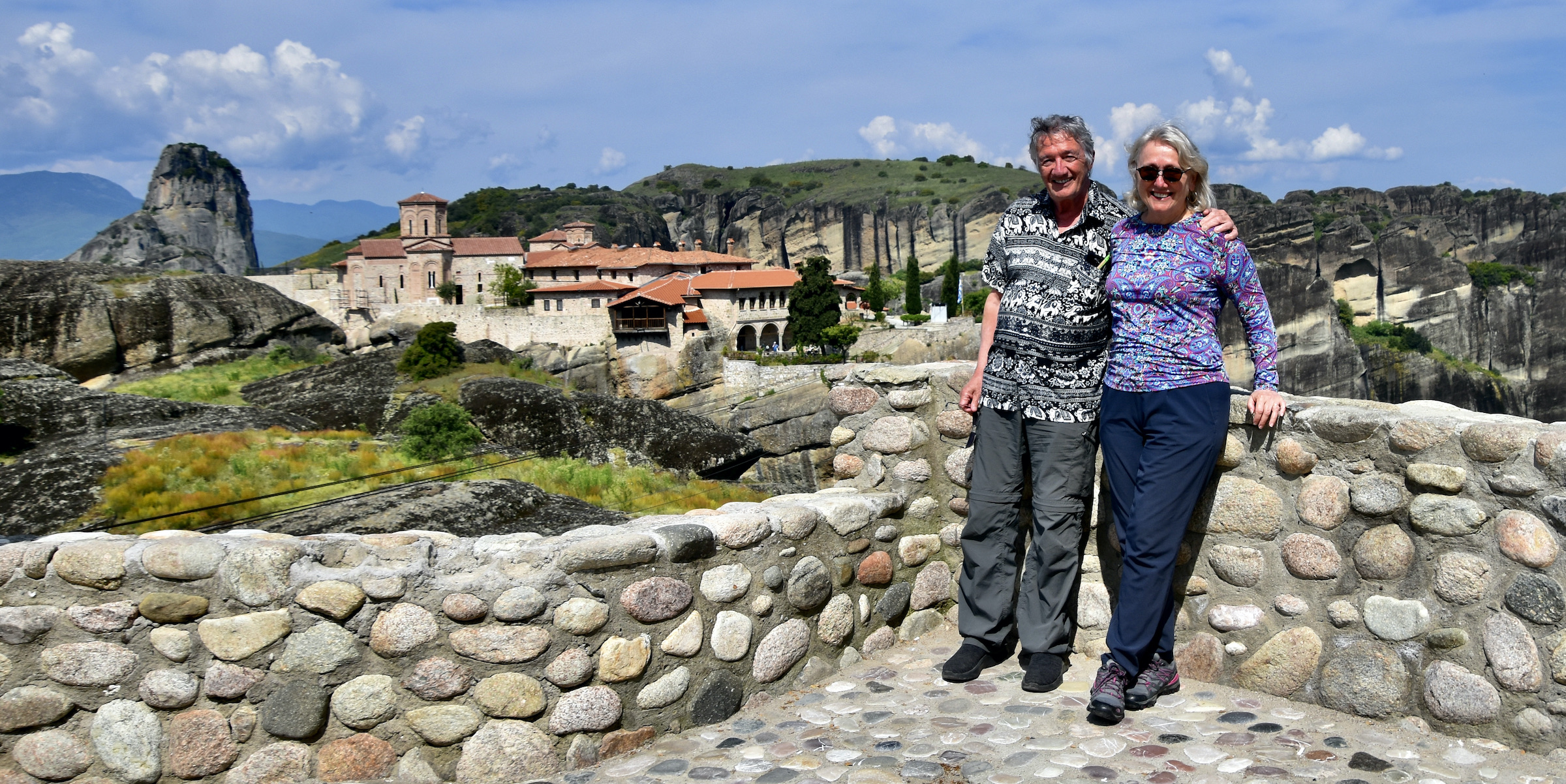
We stopped for lunch in Kalamaka and while there a very unique Adventures Abroad experience occurred. Our guide Victor Romagnoli and fellow AA guide Chris Tripodi have both been leading tours for almost fifty years combined and yet until today they had never met in person. When Chris learned that his tour and Victor’s were in Meteora at the same time he took a cab over to meet Victor.
Here’s what could be called the Stanley meets Livingston moment of AA history.
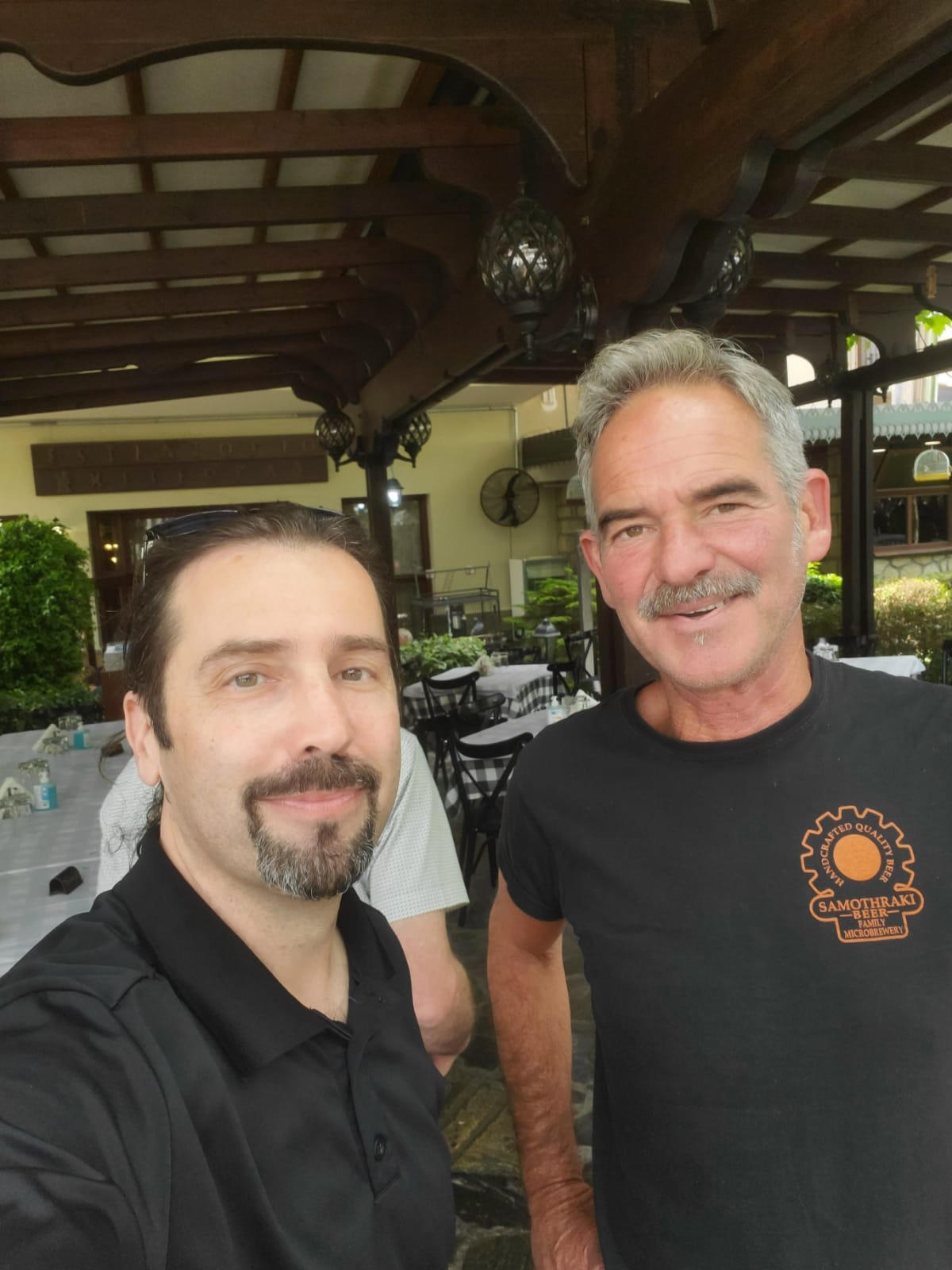
We had never toured with Chris, but others in our group had. What’s really neat is that I am writing this post while in Chile on a tour led by Chris, the first we have taken since Via Egnatia. Who knew that this brief encounter would be followed up by three weeks with Chris in a country 12,600 kms. (7,800 miles) away?
Kastoria
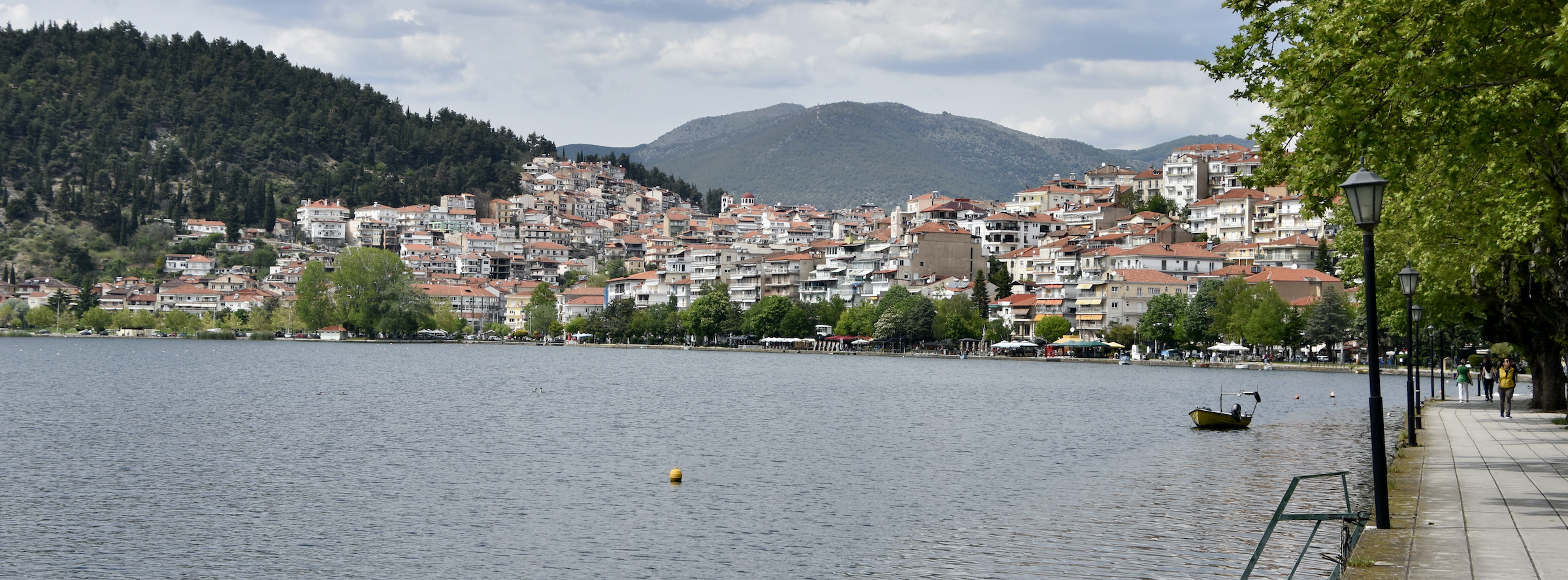
From Meteora our Via Egnatia tour turned north to the small city of Kastoria which sits on the shores of Lake Orestiada. Kastor is the latin name for beaver and indeed this place is intrinsically linked to the European fur trade. As a Canadian I tend to think of the fur trade as something associated with the early history of my country with the furs being exported to Europe. People like John Jacob Astor became fabulously wealthy from this trade. However, I did not know that there was always a thriving European fur trade and it was based right here in Kastoria. The beavers that precipitated Kastoria’s rise to prominence are long gone, but the fur trade was still going strong until the Russian invasion of Ukraine. Driving into the city there are literally dozens of fur outlets, some of them huge, but all are virtually deserted of customers. The Russians and Ukrainians, not deterred by the stigma of wearing fur that has swept much of western Europe and North America, were among the largest buyers of furs and the war put an abrupt stop to that. Writing this some ten months after our visit with the war still raging, I have to wonder how many of these places have gone under.
The fur trade created millionaires in Kastoria and they competed to outdo each other in the grandeur of their mansions which have a style unique to the city. Here is a gallery of just a few that Alison and I saw as we walked along the lakefront.
- Kastoria Mansion 1
- Kastoria Mansion 2
- Kastoria Mansion 2
- Kastoria Mansion 4
- Kastoria Mansion 5
- Kastoria Mansion 6
- Kastoria Mansion 7
Looking away from the houses to the lake there are more interesting sights to see in Kastoria like this European grebe with three chicks.
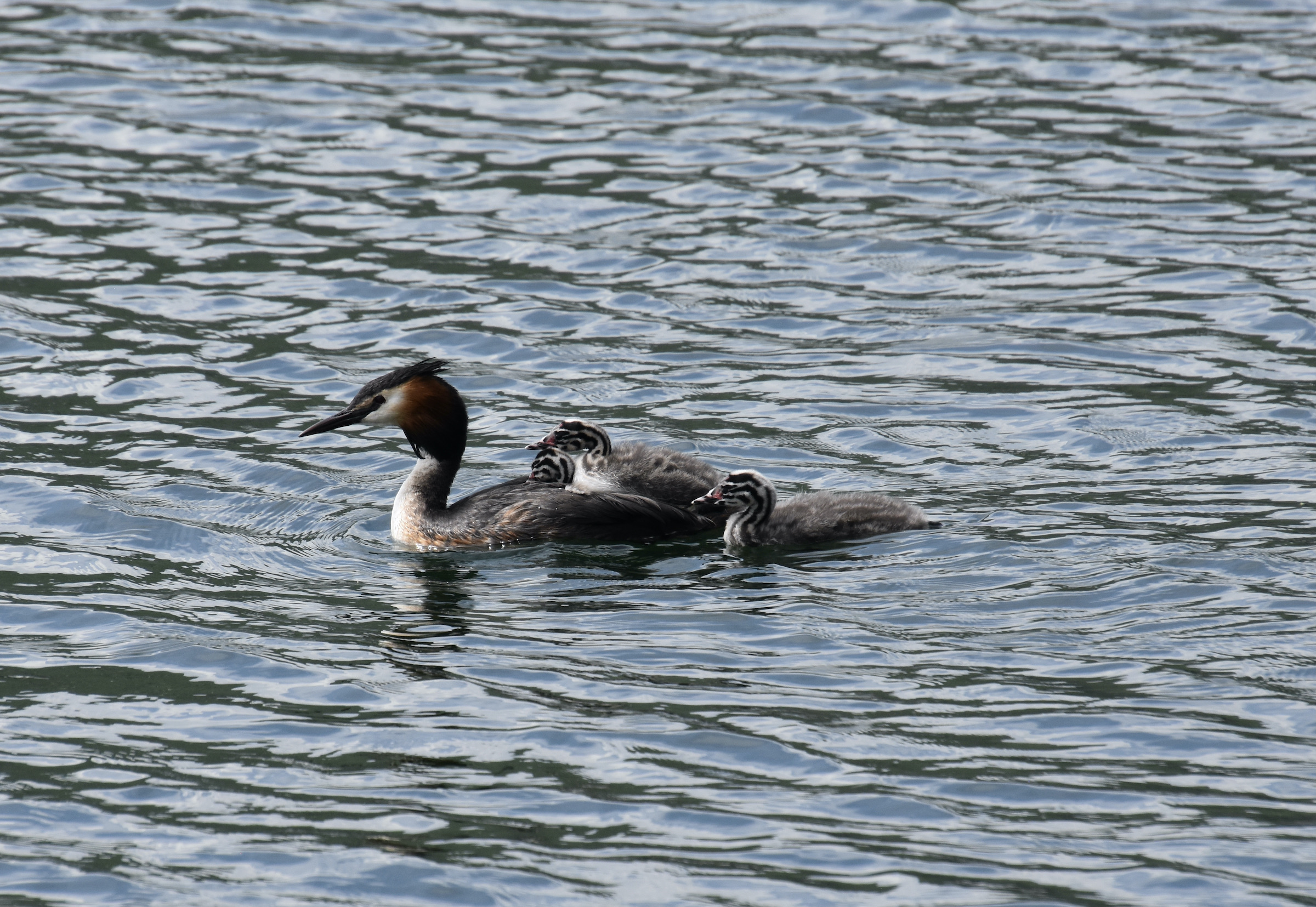
And this mother duck overseeing her ducklings from a perch on a rowboat.
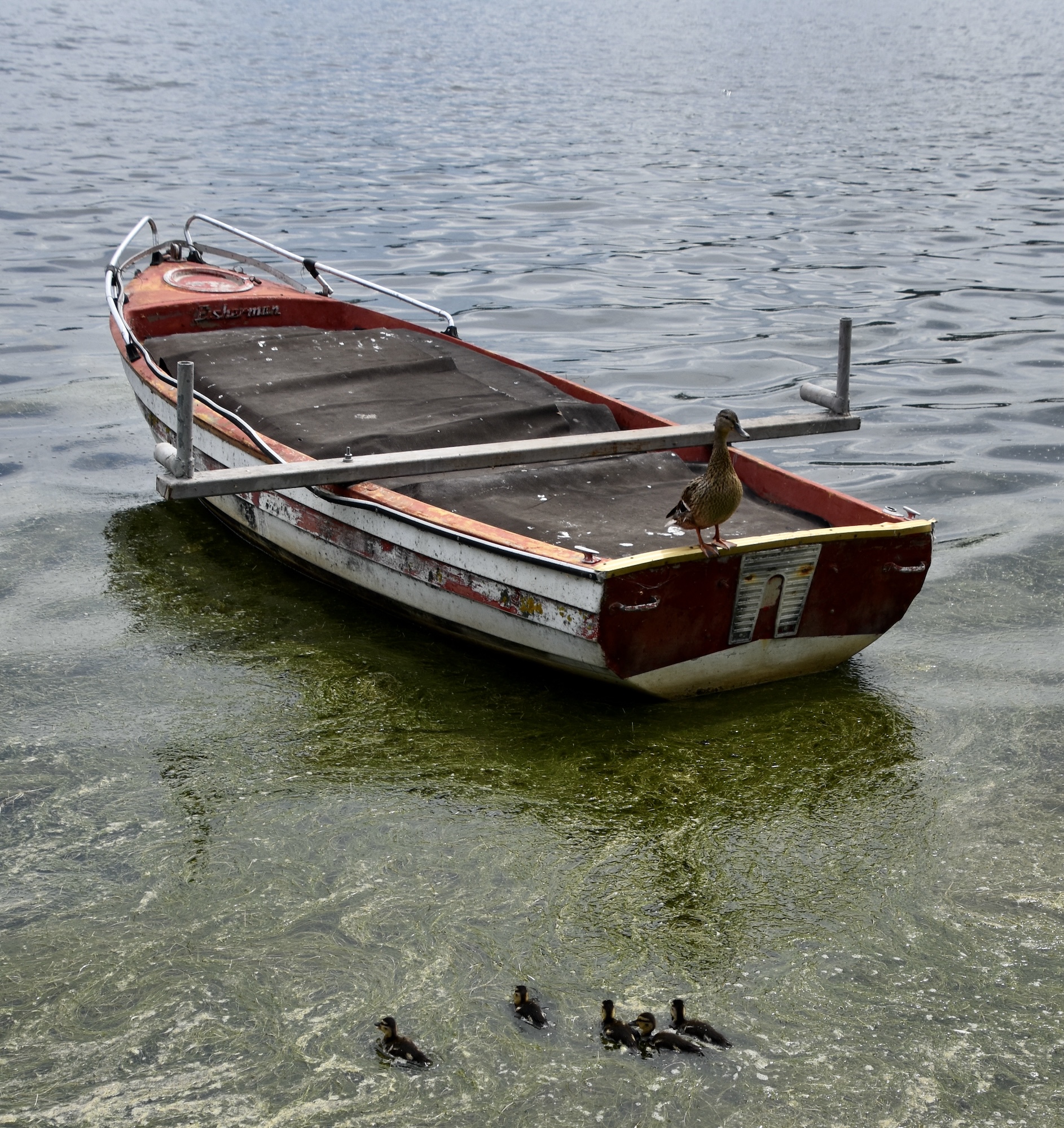
Not surprisingly this area of Greece is known for its freshwater fish and for the evening meal we have a fresh Greek salad followed by trout and really good koftas.
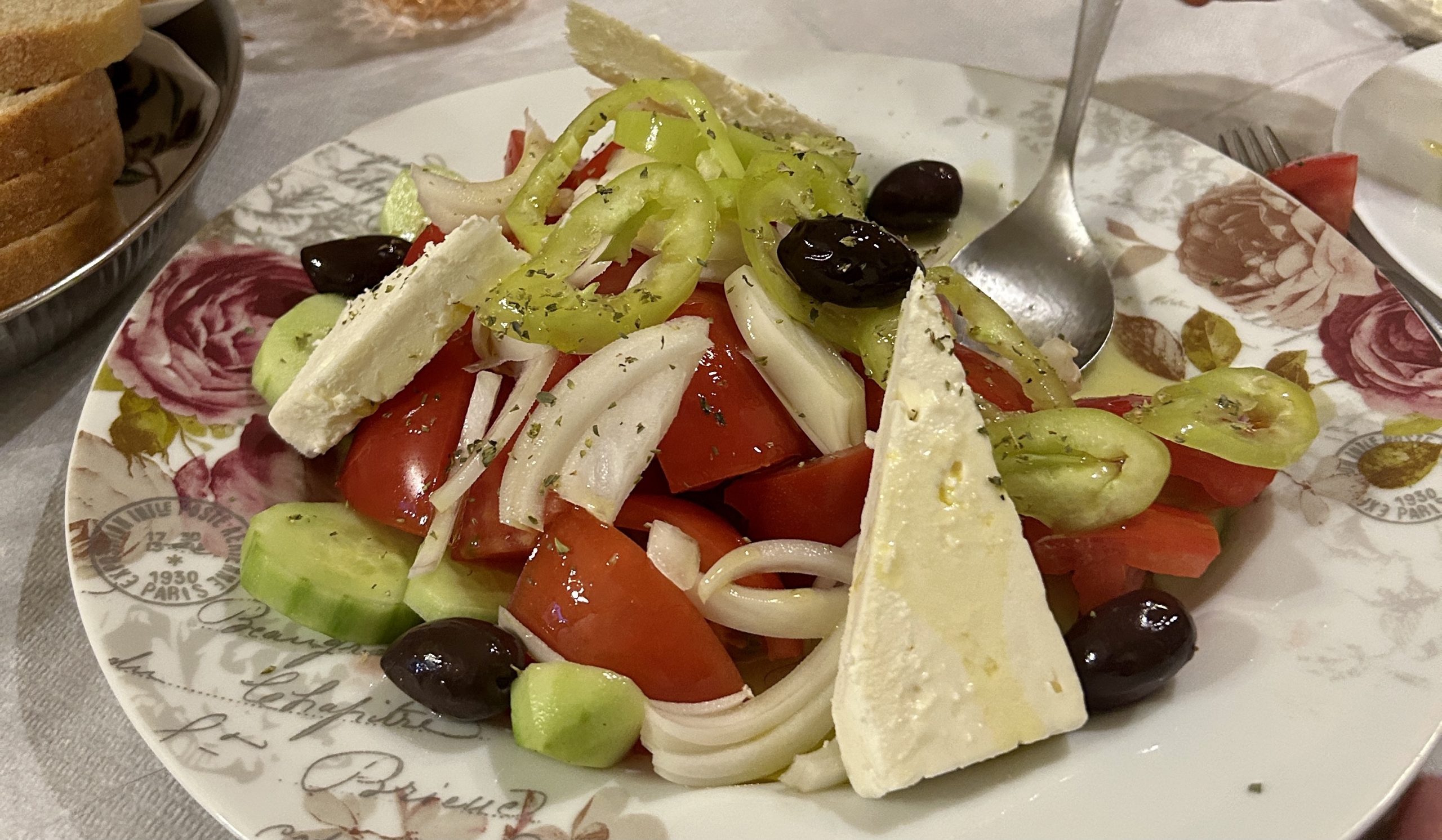
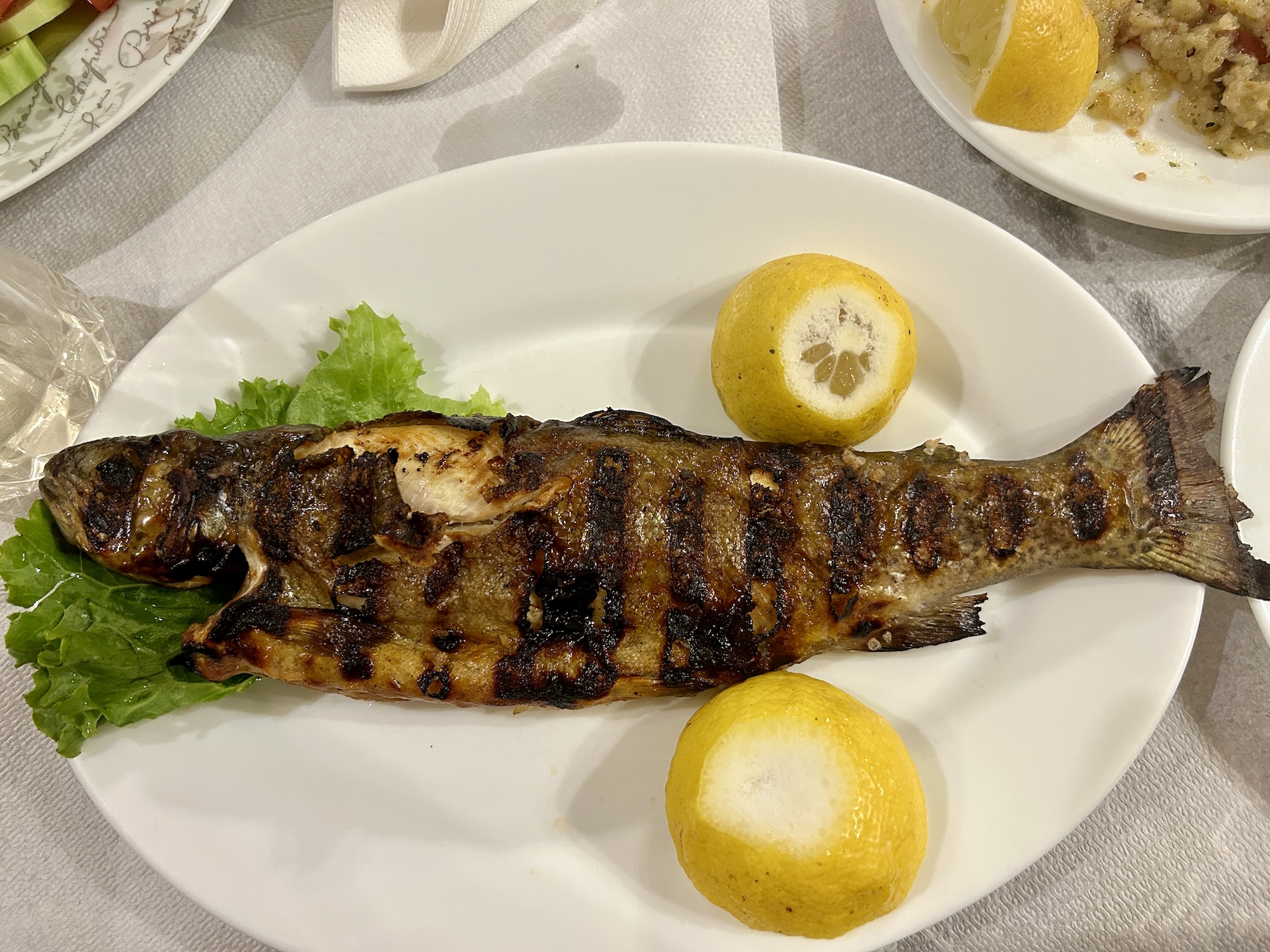
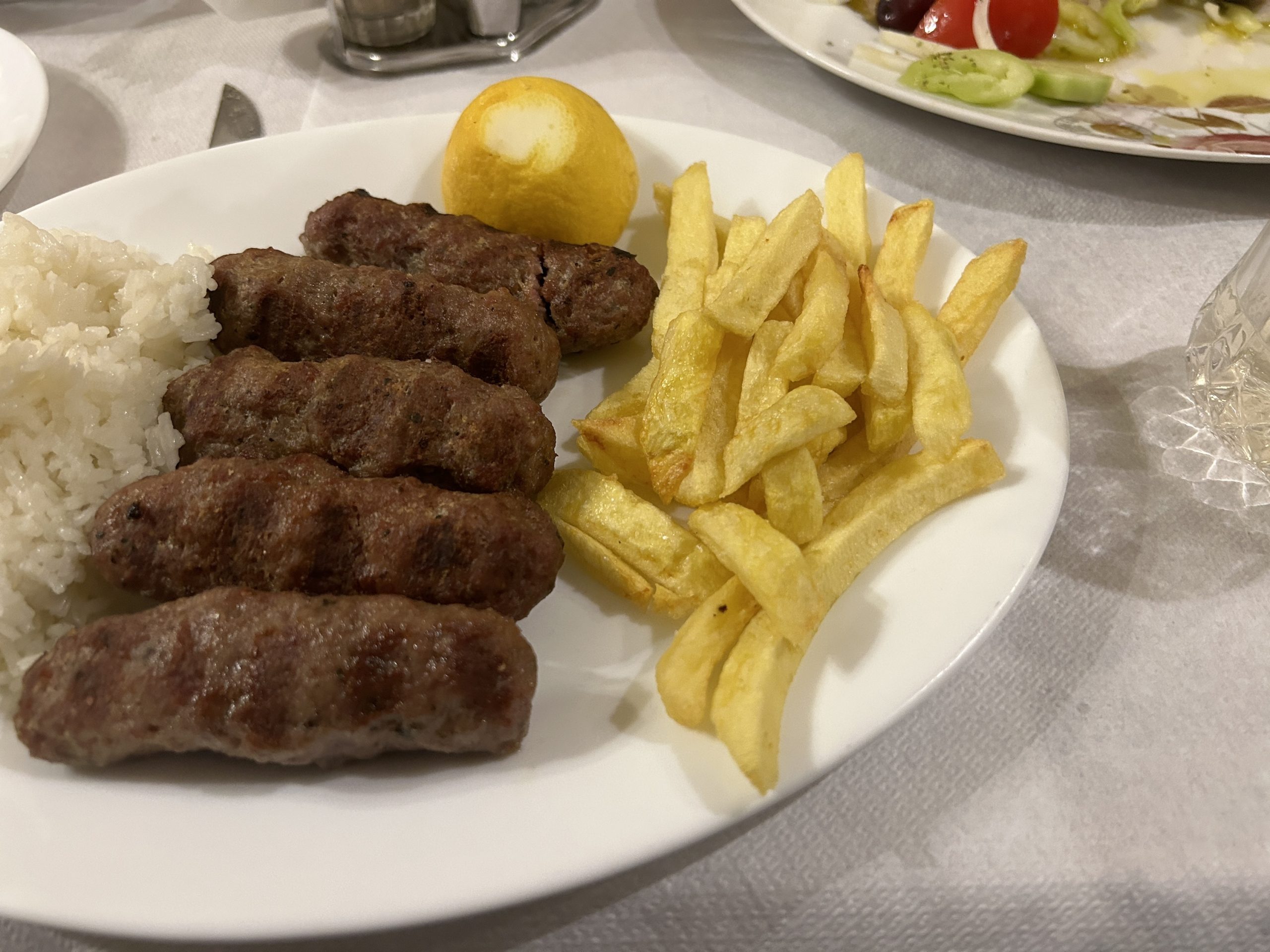
As usual we continue to eat very well on this Via Egnatia tour.
Tomorrow we leave behind Meteora and Kastoria and head into our final destination on this great tour, the ancient province of Epirus where we will visit yet another UNESCO World Heritage Site and wrap up in the city of Ioannina.


